Contents
There are many lawn diseases common on Michigan lawns. Here are some of the more common lawn diseases and how Contender’s Tree and Lawn Specialists would treat each of them to ensure your lawn is healthy and green.
Red Thread
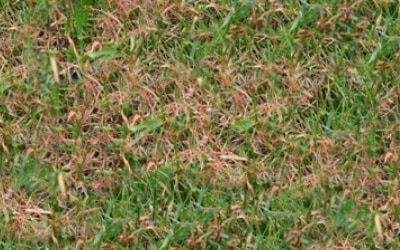
Characterized by pink or red “threading” through the lawn, these fungal patches are unsightly and fast-moving. They can be caused by overwatering the lawn during humid, wet periods of weather. A lawn fungicide treatment performed in the summer can take care of this fungus, coupled with a reduction in watering.
Dollar Spot
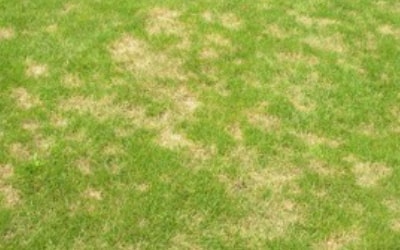
Dollar spot thrives in wet, humid conditions, so heavy dew, over-watering, late-day irrigation, and anything else that keeps grass leaves wet for long periods of time could lead to dollar spot. A lawn fungicide treatment performed in the summer can take care of this fungus, coupled with a reduction in watering.
Gray Leaf Spot
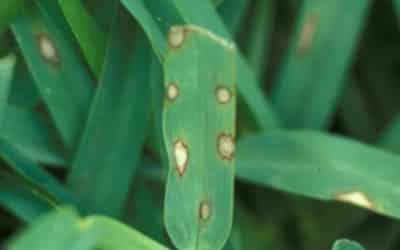
Gray leaf spot disease is caused by the fungus Pyricularia grisea, also referred to as Magnaporthe grisea. The frequent warm rainy periods common in late spring through early summer create favorable conditions for this fungal disease. This fungus slows grow-in of turf, thins established strands of grass and can kill large areas turf if left untreated.
Slime Mold
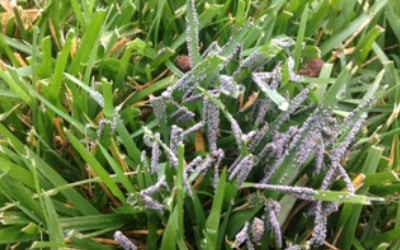
Most fungi causing slime mold on turfgrass belong to either the genera Mucilaga or Physarum. Slime molds are most prevalent following prolonged periods of leaf wetness, which favor the growth and development of the fungus. Areas with poor drainage and heavy thatch also may enhance the likelihood of their development.
Anthracnose
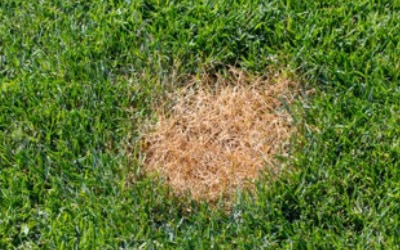
When it comes to causes for anthracnose, the most common culprits are close mowing, drought stress, poor soil drainage, or excessive thatch and organic matter accumulations. Because of its sensitivity to stress, annual bluegrass is very susceptible to anthracnose. We have been noticing that mowing companies are cutting lawns shorter and shorter to avoid coming back as frequently, so please make sure that they do not mow your turf below 2 inches.The optimal height for your lawn is about 2.5 inches.
The best way to target these fungal diseases in your lawn is to have us apply a lawn fungicide treatment to the lawn. We can perform these in late summer to early fall for best control of these diseases. It is very important to treat these issues before they worsen and spread to other areas of the lawn. Some spores can travel via mower, push spreader, even on foot to other areas of the lawn.
In our experience, we have seen mowing companies spreading fungal diseases between their customers’ properties as they were not sanitizing their blades between visits. Please keep in touch with your mowing company to assure that they clean their equipment regularly, otherwise they may be bringing your neighbor’s issues to your lawn.
Turf-Feeding Insect Damage
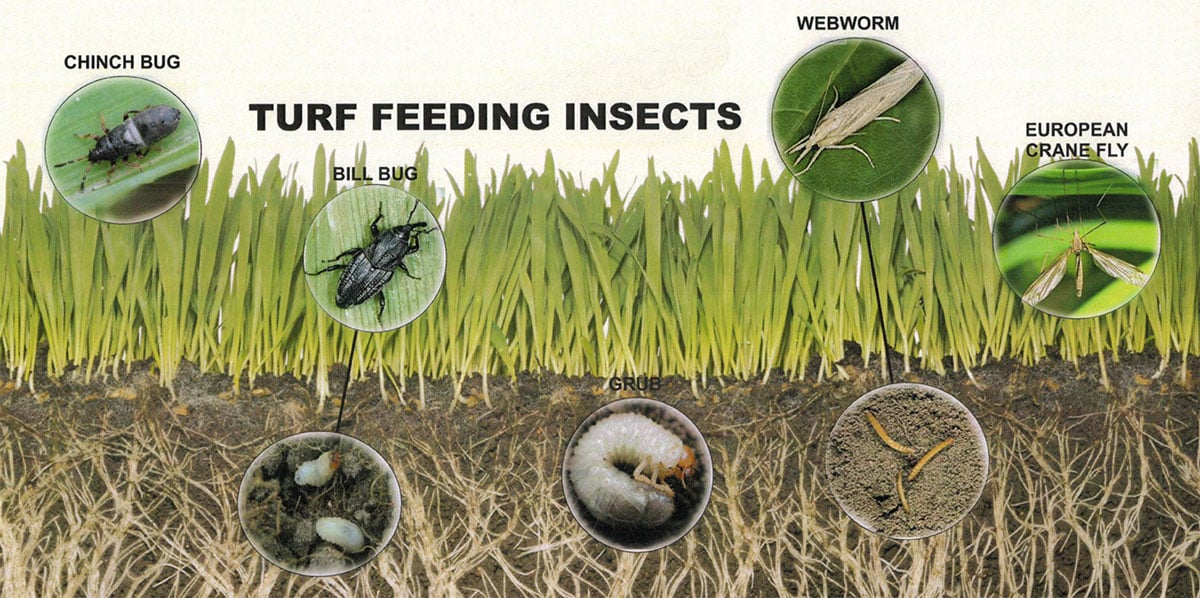
See the following insects and the damage they cause below.
Grubs (Grub Larvae)
Hover/tap for what they look like
Chinch Bugs and/or Billbugs
Hover/tap for what they look like
European Crane Fly
Hover/tap for what they look like
Sod Webworms
Hover/tap for what they look like
Taking the Next Steps for Your Lawn
If you are noticing small patterns of orange, yellow or brown patches in certain areas of your lawn that have not been helped by watering, you may have an insect infestation in your lawn. There are several common turf insects such as chinch bugs, billbugs, grubs, European crane flies, sod webworms, etc. that cause significant damage to turfgrass when left untreated. These bugs will feed on the turf blades in circular patches, and their saliva turns the grass either yellow, orange, or brown to mimic dead patches. These insects can spread quickly throughout the lawn and cannot be removed by simply watering the grass more or applying more fertilizer. We have several treatment options that can be presented and selected based on your lawn’s particular issue. For grub control, we have a grub preventative treatment done in the spring, and a grub curative treatment done in the fall. These can treat larvae or active grubs. Our sales manager will let you know if one or both is right for your lawn.
As for the rest of these turf insects, our surface insecticide treatment can take care of those. This lawn treatment is rated for over 70 species of insects, including fleas, ticks, spiders, ants, and more. If any of the pictured above lawns resemble your own and you suspect you have a turf infestation, let us know and we can have our sales manager or a technician out to evaluate and/or apply treatment at an extra charge. You can either email us at [email protected], visit our website and fill out a an estimate request form at https://www.contenders-mi.com/free-estimate/ or call us at 248-698-4470. We do not charge for evaluations if you want our sales manager to come out and evaluate within a week’s time whenever he is available, but if you’d like to arrange a date and time and meet him onsite, we charge an upfront $50 flat fee.

